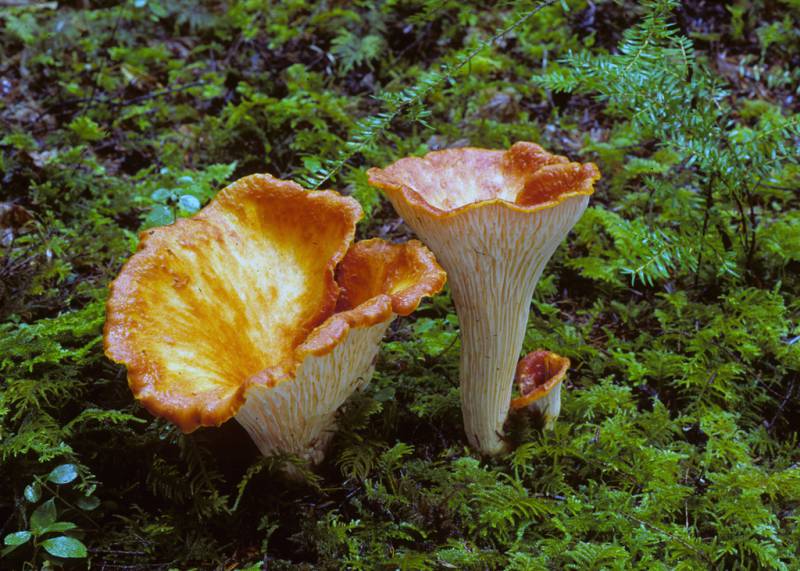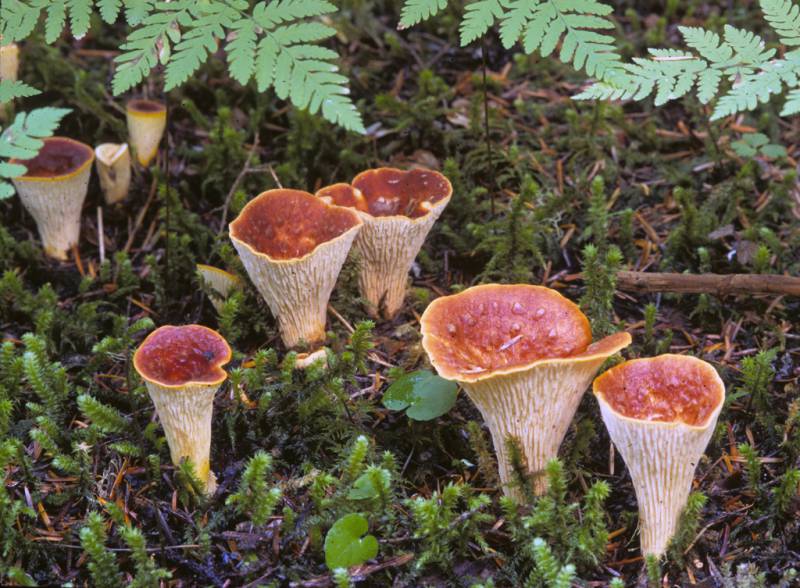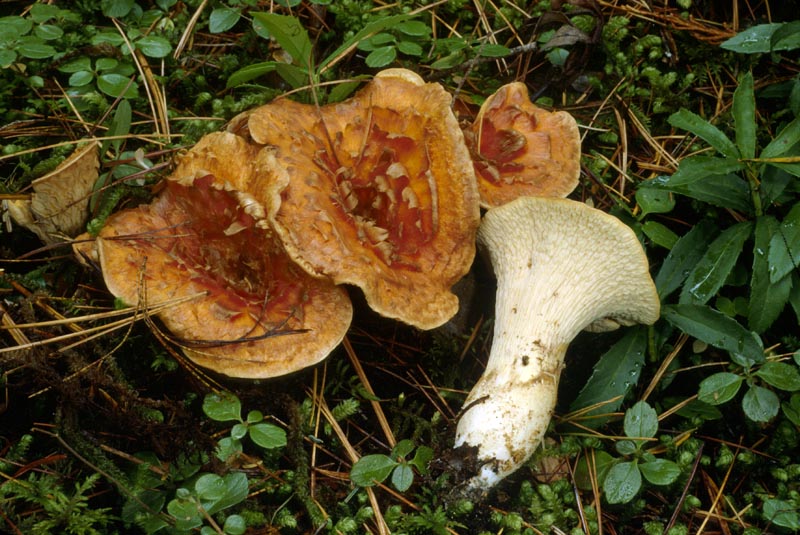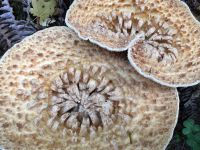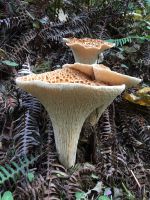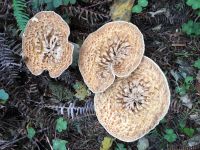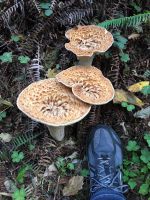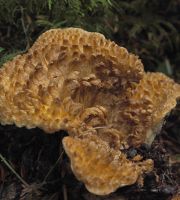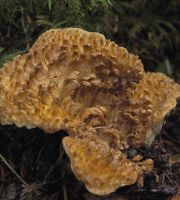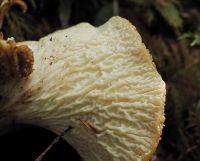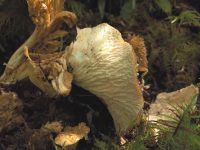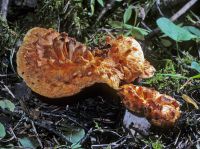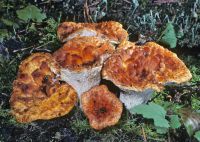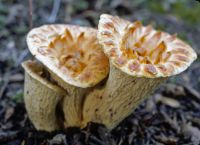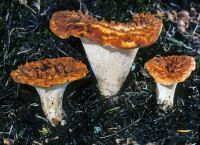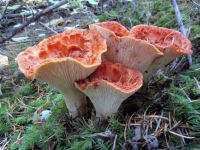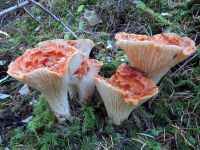Distribution: Broad Common in Western and North America
Habitat: Conifer Forests; woodland
Conservation Status: Not of concern
Edibility: Although some people consider G. floccosus delicious, others find the taste poor, and still others have reported gastric discomfort after eating it. Thus. we recommend that it be avoided.
Although some people consider G. floccosus delicious, others find the taste poor, and still others have reported gastric discomfort after eating it. Thus. we recommend that it be avoided.
Spores are ocher-brown; growth of up to 8 inches; cap diameter up to 6 inches. Gomphus bonarii has been said to differ by being smaller, having block-like yellow-orange scales with red tips, and a tendency to grow in clusters. However, in practice, it is very difficult to distinguish two species and many mycologists do not recognize G. bonarii as a separate species. Gomphus kauffmanii is similar but larger and much more scaly.
Common Name: Woody Chanterelle
PNW Herbaria: Specimen records of Gomphus floccosus in the Consortium of Pacific Northwest Herbaria database
CalPhotos: Gomphus floccosus photos

